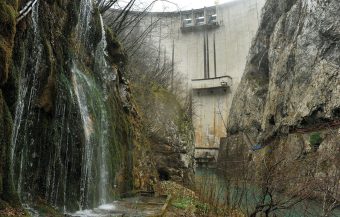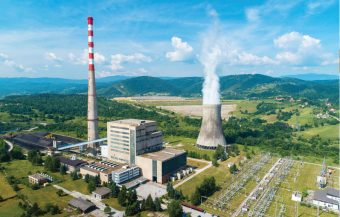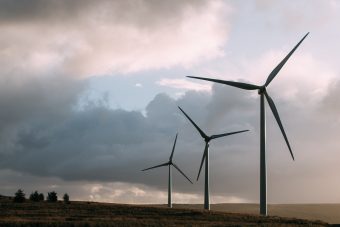 Elektroprivreda Crne Gore (EPCG) has embarked on a substantial investment cycle in the segment of renewable energy sources and investments in numerous new green energy projects. One of these is the Solari project, which began producing solar energy, once the Solari 3000+ and Solari 500+ projects were implemented. Applications for the new Solari 5000+ project have also been completed. This project has generated a multitude of positive effects, which are already visible from the financial aspect for housholds, businesses, individuals and EPCG, and from the aspect of the expectations of the international community regarding the reduction of the emission of harmful gases and the bigger use of renewable energy sources.
Elektroprivreda Crne Gore (EPCG) has embarked on a substantial investment cycle in the segment of renewable energy sources and investments in numerous new green energy projects. One of these is the Solari project, which began producing solar energy, once the Solari 3000+ and Solari 500+ projects were implemented. Applications for the new Solari 5000+ project have also been completed. This project has generated a multitude of positive effects, which are already visible from the financial aspect for housholds, businesses, individuals and EPCG, and from the aspect of the expectations of the international community regarding the reduction of the emission of harmful gases and the bigger use of renewable energy sources.
We spoke with the Director of EPCG, Nikola Rovčanin, about the advantages of investing in solar energy, improving infrastructure, building wind turbines and the Pljevlja Thermal Power Plant operations.
What is the goal of the Solari project, and what are the benefits for the end customer?
– The beneficiaries of the Solari project are given the opportunity to install the appropriate photovoltaic system, paying it off in equal monthly amounts equal to their average monthly electricity bill. The maximum investment repayment period is 10 years. Users who own a billing metre with power mea surement (so-called maxigraph) and want to install a photovoltaic system, in addition to the monthly amount for the repayment of the photovoltaic system, retain the obligation to pay the Engagement of Network Capacity monthly fee, which in the final monthly instalment will be equal to the average monthly electricity bill.
By installing a photovoltaic system, the end user becomes a so-called prosumer, who meets their energy needs from their own source, and any excess/shortage of electricity at a certain moment is handed over/ received through the power grid, which is financially balanced out annually. Users pay off the system in equal monthly instalments through a credit arrangement provided by EPCG. In this way, the project’s beneficiaries become the owners of a small solar power plant, the capacity of which is designed to approximately (or completely) meet their electricity needs. The EPCG Solar Gradnja Company has trained teams that are at the service of consumers to efficiently reach the stage of producing electricity themselves and becoming prosumers.
IN FOCUS:
- MULTIPLE BENEFITS OF BIOGAS – FROM ENERGY TO FERTILIZER
- EMPOWERING CITIZENS TO BECOME PROSUMERS OF SOLAR ENERGY
- ELECTRIC POWER DISTRIBUTION OF SERBIA – CHALLENGES OF CONNECTING PROSUMERS TO THE POWER GRID

How much solar energy is used, and what is the motivation like?
– Our staff responding quickly to the rapid energy transition in the market poses a special challenge. EPCG recognized the labor shortage problem and then felt it on its skin. The launch of the Solari 3000+ and Solari 500+ projects actualized this threat, but we were ready for it because we had foreseen it. We arranged for timely training sessions and worked hard on properly training our employees, so today, EPCG Solar Gradnja has a significant number of very good and ready assembly teams to respond to serious challenges when it comes to the installation of photovoltaic systems, whether they are mounted on the roofs of buildings or the ground. New facilities create new jobs, and we see this as an opportunity in our company, not only as a company but also in terms of a broader picture regarding social responsibility. I believe that the state must get involved and, through school curriculum and programs for retraining and additional workforce training, enable people to learn, acquire new skills and improve.
Does the existing infrastructure need to be improved to contribute to the bigger use of renewable energy sources in Montenegro?
– It is necessary to improve the existing power infrastructure in Montenegro to prepare it to support numerous new green energy sources. There is some concern regarding possible problems in our current transmission system. Nevertheless, I think that we will overcome these problems and that, in parallel with the implementation of the planned projects, the transmission system will develop and be ready to infrastructurally support all newly connected production facilities.
EPCG has managed to overcome the energy crisis by not stopping its investment cycle, but by maintaining the stability of the energy system, without restrictions and by not increasing electricity prices. How far did you come with constructing the GVOZD wind farm in Krnovo?

What are the next plans?
– In terms of wind energy, we have a project that entails the construction of the Gvozd wind farm with an installed capacity of 54.6 MW. It will be financed from the credit agreement EPCG will sign with the EBRD. All tender procedures for Gvozd are conducted on the EBRD’s electronic procurement portal according to transparent procedures. During the pre-qualification segment of the tender for the procurement of wind generators, which includes the procurement, installation and commissioning of wind generators, received nine offers from renowned global companies, four of which entered the second round of the tender procedure. In the following period, and in addition to embarking on the second phase of the procurement, which stipulates the procurement, installation and commissioning of wind generators, another tender will be launched for construction works on the plateaus and internal medium voltage network, roads, followed by a tender for connecting the Gvozd wind farm to the power transmission grid. A public call for an implementation consultant will also be launched.
What is the fate of TE Pljevlja?
– TPP Pljevlja has started implementing an environmental reconstruction project. We are trying to realize this project with our partners and contractors as soon as possible, bearing in mind that Montenegro has to fulfil the environmental requirements necessary to continue with the EU accession process regarding powdery substances, sulfur and nitrogen oxides. All these systems that we are installing will contribute to that. In this way, Montenegro will position itself as a country with one of the latest thermal energy facilities in the region and beyond.
Prepared by: Mirjana Vujadinović Tomevski
Read the story in the new issue of the Energy portal Magazine RENEWABLE ENERGY SOURCES

